A connective tissue
(a) Has no matrix
(b) Covers the skin
(c) Has abundant matrix
(d) None of these
Which one of the following contains the largest quantity of extracellular material
(a) Myelinated nerve fibres
(b) Striated muscle
(c) Areolar tissue
(d) Stratified epithelium
When collagen fibres are removed from the areolar tissue
(a) Tissue becomes hard
(b) Tissue becomes loose and elastic
(c) Tissue becomes hard and inelastic
(d) Remains unchanged
Which part of body’s weight is formed by connective tissue
(a) 40%
(b) 30%
(c) 20%
(d) 60%
Related: Chemical Bonding questions
The types of fibres found in connective tissues are
(a) Collagan fibres
(b) Elastic fibres
(c) Reticular fibres
(d) All of the above
Below the skin, the fat is in the form of
(a) Lipoproteins
(b) Adipose tissue
(c) Mucous layer
(d) Lymphoid tissue
Whale is a warm-blooded animal which lives in cold sea. Which organ of its body makes it hot
(a) Blubber
(b) Pelage
(c) Muscles
(d) Blood vessels
Primary function of subdermal fat in the skin of mammals is
(a) To preserve collected sum
(b) To act as a heat proof matter
(c) To prevent the jerks
(d) To protect the body
Which one of the following is not a fibrillar protein
(a) Elastin
(b) Collagen
(c) Myosin
(d) Albumin
Related: Trigonometry questions
Camel’s hump is made up of
(a) Skeletal tissue
(b) Muscular tissue
(c) Cartilage
(d) Adipose tissue
The giant cell is formed by the fusion of
(a) Macrophage
(b) Plasma cell
(c) Mast cell
(d) All of the above
Which of the following cells of connective tissue secrete antibodies
(a) Mast cells
(b) Reticular cells
(c) Adipose cells
(d) Plasma cells
The areolar tissue connects
(a) Two bones
(b) Muscle and the bone
(c) Muscle and the fat tissue
(d) Muscles and their compound
Debove’s membrane is a layer of
(a) Muscular tissue
(b) Epithelial tissue
(c) Connective tissue
(d) All of these
Related: Thermodynamics questions
Histiocyte is a connective tissue cell, the function of which is
(a) Phagocytic
(b) Secretion
(c) Substanance
(d) Fibre production
The main function of connective tissue is
(a) Binding together other tissues
(b) Supporting various parts of the body
(c) Forming a packing around organs
(d) All the above
Connective tissue is
(a) Ectodermal in origin with intercellular spaces
(b) Mesodermal in origin without intercellular spaces
(c) Ectodermal in origin without intercellular spaces
(d) Mesodermal in origin with intercellular spaces
Ligaments and tendons are
(a) Connective tissue
(b) Muscular tissue
(c) Fibrous connective tissue
(d) Skeletal tissue
The main difference in white and yellow fibres is of
(a) Protein
(b) Colour of the fibres
(c) (a) and (b) both
(d) None of the above
Related: Quiz questions on Animals
Which of the following cells is phagocytic in nature
(a) Mast cell
(b) Podocytes
(c) Macrophages
(d) Fibroblast cells
Collagen is
(a) Lipid
(b) Carbohydrate
(c) Globular protein
(d) Fibrous protein
Vitreous humor is
(a) Mucoid connective tissue
(b) Solid crystalline
(c) Watery fluid
(d) All of these
Function of adipose tissue is
(a) Fat storing tissue
(b) Helps in homeothermy
(c) Acts as shock absorber
(d) All the above
Which of the following helps in maintaining body hot
(a) Sweat glands
(b) Connective tissue
(c) Adipose tissue
(d) Hair
Related: Endocrine system quiz
The ground substance of connective tissue is basically composed of
(a) Mucopolysaccharides
(b) Lipids
(c) Monosaccharides
(d) Phospholipids
Adipocytes are mainly found in
(a) Bones
(b) Cartilages
(c) Connective tissue
(d) Nerves
The connective tissue that connects the skin to the underlying structures is
(a) Areolar tissue
(b) Serous membrane
(c) Reticular tissue
(d) Dense connective tissue
Ligament is a
(a) Modifed white fibrous tissue
(b) Modifed yellow elastic fibrous tissue
(c) Inelastic white fibrous tissue
(d) None of these
Rapid healing of wounds is found in
(a) Epithelial tissue
(b) Muscular tissue
(c) Connective tissue
(d) Nervous tissue
Related: Fluid mechanics objective type questions and answers
Which among the following is not characteristic of yellow fibres of connective tissue
(a) Contain elastin
(b) Fewer in number
(c) Straight and branched
(d) Provide toughness and strength
Which of the following is loose connective tissue
(a) Areolar
(b) Adipose
(c) Blood
(d) Nervous tissue
In mammals, histamine is secreted by
(a) Fibroblasts
(b) Histiocytes
(c) Lymphocytes
(d) Mast cells
Reticular connective tissue is found in
(a) Liver
(b) Spleen
(c) Kidneys
(d) Skin
Which of the following is not correct
(a) The brown adipose tissue cell has a single large droplet surrounded by a small amount of cytoplasm, whereas the white adipose tissue cell has many small droplets of fat suspended in a larger amount of cytoplasm
(b) Brown fat cells contain many mitochondria, while white fat cells have comparatively few
(c) Brown fat has a larger capacity for generating heat than white fat
(d) Brown fat is mainly found in new born mammals
Related: Respiratory system quiz
White adipose tissue contains
(a) Multilocular fat cells
(b) Bilocular fat cells
(c) Unilocular fat cells
(d) Alocular fat cells
Mast cells are found in
(a) Connective tissue
(b) Muscular tissue
(c) Nervous tissue
(d) Blood
New born mammals generally do not shiver inspite of lower temperature outside because of
(a) Brown fat which has larger capacity for generating heat
(b) White fat which has larger capacity for generating heat
(c) Chromatophores present in them
(d) Skeletal tissue present in them

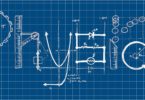
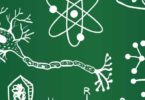
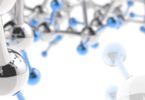
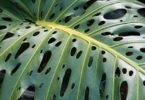
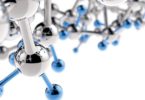
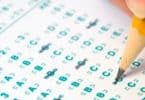
very good